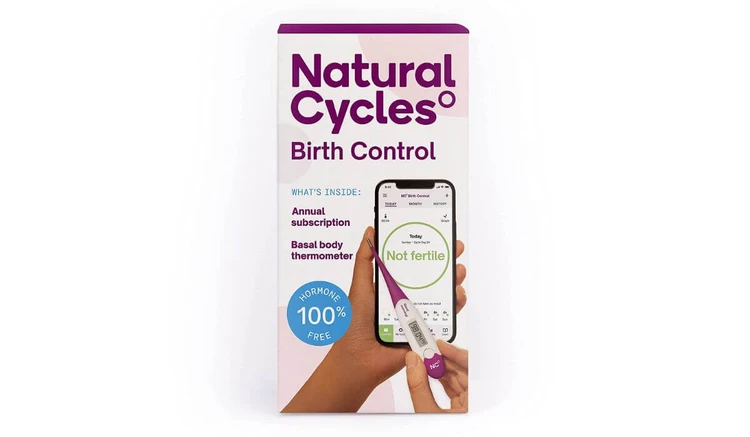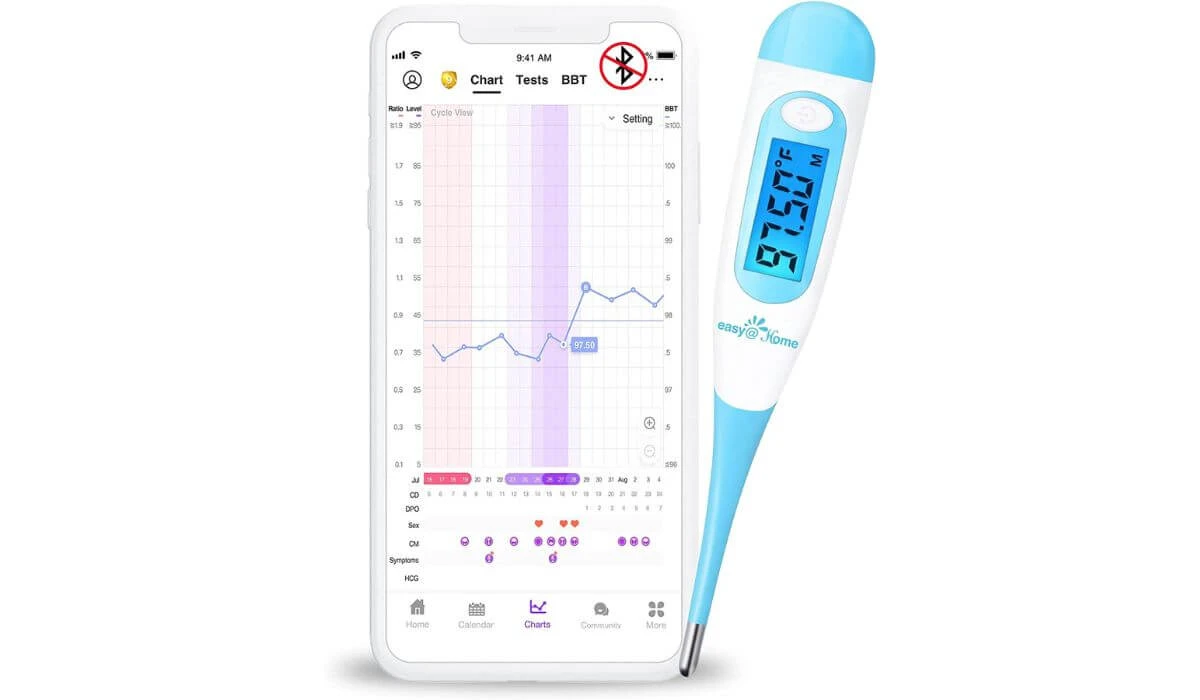If you’ve been hanging around the TTC (trying to conceive) conversations in the Peanut Community, you might already have heard of a basal thermometer. But what exactly is it? Let’s take the temperature on this popular piece of kit.
This article has been reviewed and approved by expert embryologist Navya Muralidhar.
You’re a couple weeks in and your TTC toolkit is expanding fast.
Between ovulations tests and PdG tests, you may have come across a basal thermometer more than a few times.
You know that it plays an important part in tracking your ovulation but how essential is it?
And is it worth the investment?
We say when it comes to easing the TTC journey, every little helps but we’re also for well-informed decisions.
So, let’s get you clued up on what a basal body temperature thermometer is and how it can help you get one step closer to mama status.
In this article: 📝
- What is basal body temperature?
- What is a basal thermometer used for?
- How to take basal body temperature?
- What’s difference between basal thermometer and regular?
- Which thermometer is best for ovulation?
What is basal body temperature?
Before we dive into the bbt tech details, let’s take it back to basics.
What is your basal body temperature (BBT)?
It’s your core body temperature immediately after you wake up, when your body is completely at rest and you’re probably the coolest (at least temperature-wise) you’re going to be all day.
Because your temperature is going to fluctuate throughout your menstrual cycle, knowing how warm you are in the morning is a pretty solid way to track it.
And tracking that makes charting your ovulation a heck of a lot easier.
We know that a woman’s BBT typically goes up immediately after ovulation or at least when the egg is released.
So if you track your BBT throughout the month, you’ll get a fairly accurate idea of the cycle day on which your body ovulates, whether that’s like clockwork on day 14, or whether it’s usually later in your cycle.
And we don’t need to tell you that knowing when you’re ovulating, means knowing when to time sex to give you the best chance of getting pregnant.
Or, if that’s not the plan right now, it can let you know which days you need to use extra protection to avoid pregnancy.
Enter, basal body temperature thermometer.
What is a basal thermometer used for?
You’ll need a basal thermometer if you’re doing something called basal body temperature tracking.
But first, a word of caution: temperature tracking isn’t a reliable method of protection or a guarantee that you’ll conceive faster, at least at first.
Your BBT doesn’t tell you anything until after you’ve ovulated, and you have the highest chance of getting pregnant if you have unprotected sex a day or two before ovulation.
Remember, sperm can survive three to five days in the uterine tract so if you’re looking to conceive, its best to have sex during your fertility window.
Overall, if you track your temperature over a few months, you’ll have a better sense of your body’s natural rhythm, and this can be really helpful if you’re TTC.
So where exactly does the basal thermometer come in?
How to take basal body temperature?
If you’re going to track your temperature with a bbt thermometer, it’s usually best to start on day one of your cycle (the first day of your period).
You’ll need to take the reading as soon as you wake up, before you get out of bed, and at roughly the same time every day.
No sweat!
One more thing (especially if you’re relying on a ‘fertility awareness method’ to prevent pregnancy).
Lots of things can mess with your BBT: illness, alcohol, travel, menopause, breastfeeding, even a bad night’s sleep…
It’s worth noting these things down as well, especially around the middle of your cycle.
Where do you put a basal thermometer?
The pregnancy journey is paved with blood tests and urine test strips, so wondering where you put a basal body thermometer is fair.
You can take the reading from under your tongue (phew), and record the numbers either on paper or in an app or spreadsheet on your phone – whatever’s easiest for you.
Can you measure basal body temperature with a regular thermometer?
Can you use a regular thermometer to take your BBT?
Temperature is temperature right?
The thing is, although your BBT should consistently rise after you ovulate, it’s only by a small amount.
We’re talking somewhere around 0.5°F/0.3°C.
Technically, any digital thermometer that can measure a difference of 0.1 degrees should be able to pick this up, as long as you change the batteries regularly to keep it working perfectly.
But a basal thermometer is still the most reliable.
What’s difference between basal thermometer and regular?
So what’s the difference between a basal body thermometer and a normal digital one?
Put simply, a specially designed basal body temperature thermometer has several extra features that give it the edge:
- Accuracy: BBT thermometers can precisely measure up to 0.01 degrees of change, which gives you extra information to track subtle differences in your temperature.
- Easier tracking: A lot of basal thermometers can connect to your phone via Bluetooth, which makes keeping track of the readings when you’re still mostly asleep much easier.
- Memory recall: Even if they don’t sync automatically, speciality models will save the reading so that you can compare the next day.
- User friendly: Basal thermometers usually have a backlit screen, which helps if you’re trying to use it before you’ve opened the drapes. Some even give a little beep when finished.
Which thermometer is best for ovulation?
So basal body temperature thermometers have many advantages over a regular thermometer but which ones outshine each other?
There are many options to choose from, some more expensive others, that it’s easy to get overwhelmed.
But here’s the thing: as long as a BBT thermometer is user friendly and accurate, you’re already a step ahead of getting handle on when you’re ovulating.
To help get you there, here are our top picks:

Birth Control & Basal Thermometer from Natural Cycles
A tried-and-tested Peanut mama pick, this birth control pick comes with a high accuracy BBT thermometer that can measure temperature up to two decimal places.
The kit’s annual subscription includes daily fertility statuses based entirely on Natural Cycles’ fertility finding algorithm.
This is a great pick if you want to suss your fertility window whether you’re TTC or trying not to.

Digital Basal Body Thermometer by MABIS
If you want a no frills BBT thermometer, this one by MABIS features an easy-to-read display that gets straight to the point.
It’s simple design is nicely low-key and hides that impressive memory recall we mentioned earlier.

Digital Basal Thermometer by Easy@Home
A favorite of TTC communities everywhere – including our own – the Easy@Home basal thermometer works with the Premom app to track your ovulation cycle.
It’s clinical accuracy is on point not to mention it’s waterproof and it’s vibrant backlit blue screen is easy to read in the dark – perfect for early winter mornings.
No matter which brand takes your fancy, tracking your BBT with a basal thermometer can be helpful for getting as much information as possible about how your body works.
If you’re TTC, it can be more effective to track your temperature alongside other fertility awareness methods, like checking the position of your cervix or tracking your cervical mucus.
Just ask the Peanut Community, the conversation is happening as we speak.
It always is.

